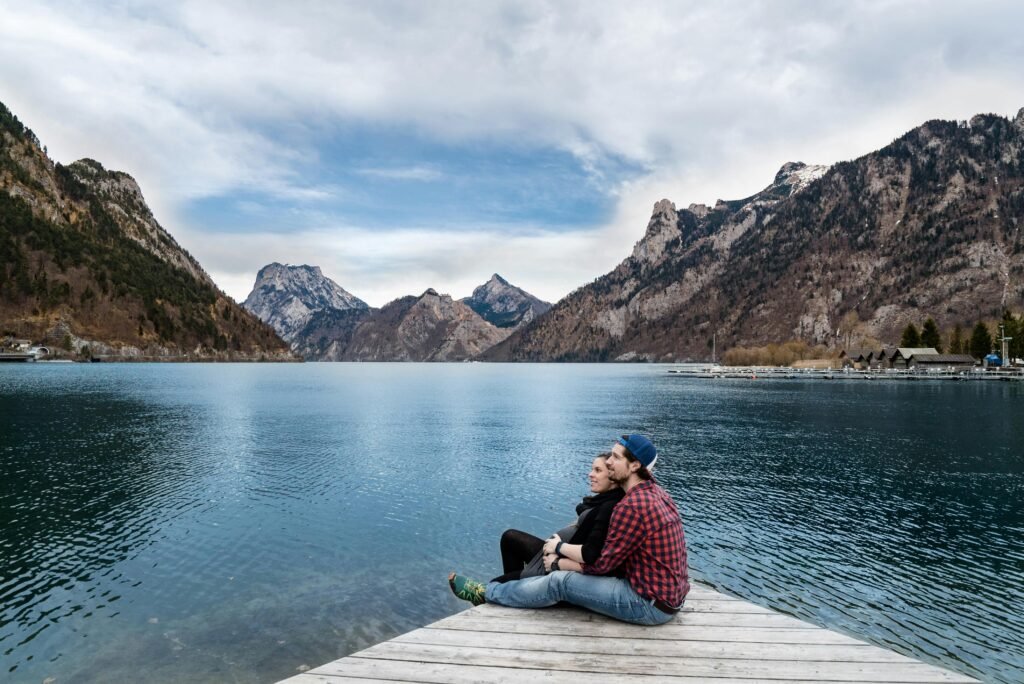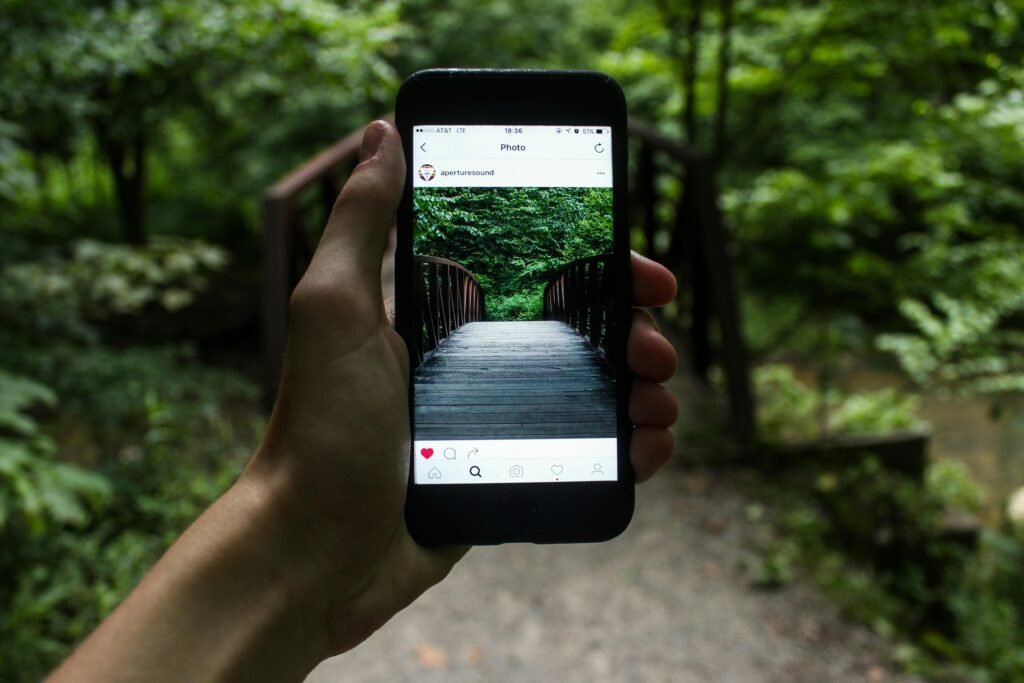Introduction to UNESCO and Its Photogenic Sites
The United Nations Educational, Scientific and Cultural Organization (UNESCO) plays a vital role in the preservation and promotion of cultural, historical, and natural heritage worldwide. Established in 1945, UNESCO aims to foster international collaboration through educational, scientific, and cultural initiatives. One of its most significant contributions is the designation of World Heritage Sites, which are recognized for their exceptional value to humanity. These sites offer a diverse array of attractions, showcasing remarkable architecture, ancient ruins, breathtaking landscapes, and unique biodiversity.

What makes UNESCO sites particularly captivating for photographers is their rich history and distinct cultural narratives. Each site possesses unique elements that tell a story, be it through ancient civilizations, natural wonders, or significant artistic expressions. The architectural brilliance of structures like the Great Wall of China or the intricate designs of the Alhambra in Spain presents a feast for the eyes and serves as an ideal canvas for photography. Equally, natural heritage locations such as the Serengeti and the Great Barrier Reef provide stunning visuals that capture the wonders of our planet.
The growing trend of sharing travel experiences on social media, especially on platforms like Instagram, underscores the importance of visually striking destinations. As travelers increasingly seek out Instagrammable locations, UNESCO World Heritage Sites emerge as popular choices for their ability to deliver breathtaking images. The beautiful landscapes, historical monuments, and vibrant cultures depicted at these sites not only showcase their beauty but also raise awareness about the need to preserve our shared heritage. Due to their inherent visual appeal, these sites have become essential stops for both seasoned photographers and casual travelers looking to curate the perfect feed.
Top UNESCO Sites for Photographers
Photographers are often on a quest for stunning backdrops that epitomize beauty and history, making UNESCO World Heritage Sites ideal for capturing extraordinary images. These sites not only possess cultural significance but also showcase diverse landscapes, architectural marvels, and rich histories that inspire creativity. Here are several UNESCO sites across different continents that stand out as treasures for photographers.
One of the most iconic locations is Machu Picchu in Peru. Nestled high in the Andes mountains, this ancient Incan citadel offers breathtaking views and a mystical atmosphere. The combination of dramatic mountain scenery and well-preserved ruins creates a picturesque setting that is perfect for capturing both wide landscapes and intricate details of Incan architecture. The early morning fog enveloping the ruins adds an ethereal quality to photographs, enticing both amateur and professional photographers.
Moving to Asia, the Great Wall of China embodies not only an engineering feat but also a stunning visual spectacle. Stretching over 13,000 miles, this monumental structure snakes through breathtaking landscapes, including lush mountains and arid deserts. Each section of the wall offers different perspectives for capturing its grandeur, especially when complemented by the changing light of dawn and dusk. The juxtaposition of ancient stonework against vibrant natural scenery makes it a compelling subject.
In Europe, the historic city of Venice, Italy, provides a wealth of photographic opportunities. With its winding canals, striking architecture, and charming gondolas, Venice is a city that exudes romance and adventure. Its unique urban layout, punctuated by stunning structures like the Basilica di San Marco, ensures that photographers can find countless angles and compositions. The reflections on the water and the soft light during sunrise create a dreamy environment, perfect for those eager to capture the essence of this iconic city.
These UNESCO sites, among many others, offer photographers a chance to explore and document rich cultural landscapes, making them invaluable additions to any visual storyteller’s portfolio.
Understanding Composition: Tips for Capturing UNESCO Sites
Composition is a critical aspect of photography that greatly influences the visual appeal of your images, particularly when capturing the stunning beauty of UNESCO sites. By utilizing fundamental principles such as the rule of thirds, leading lines, symmetry, and framing, photographers can create captivating and dynamic photographs that have the power to engage viewers.

The rule of thirds is a foundational guideline that many photographers implement. By dividing your image into a grid of nine equal parts, you can strategically place points of interest along these lines or at their intersections. This technique enhances balance and helps guide the viewer’s eye throughout the image. When photographing a UNESCO site, consider aligning architectural features or natural elements with these focal points to create a more compelling composition.
Leading lines are another powerful compositional tool that directs the viewer’s gaze toward the main subject of your photograph. Roads, pathways, or natural patterns can serve as leading lines, drawing attention to the UNESCO site you are capturing. This technique not only adds depth to your images but also invokes a sense of journey within the frame, inviting viewers to explore the scene further.
Symmetry can create a visually striking photograph, especially in the case of UNESCO sites known for their architectural prowess. Capturing symmetrical elements invokes a sense of harmony and makes for an aesthetically pleasing image. Take your time to find the right angle that showcases this balance, which often results in photographs that are inherently more captivating and harmonious.
Lastly, effective framing can dramatically improve your composition. Use natural surroundings like trees, arches, or other structures to frame your UNESCO site. This technique not only highlights the subject but also provides context to the shot, making it more immersive and engaging for the audience.
Timing the Shot: The Best Times to Photograph UNESCO Sites
When it comes to capturing the essence of UNESCO sites through photography, understanding the significance of lighting and timing is essential. Natural light can dramatically transform the way a photograph looks, and recognizing the best times to shoot is vital for achieving stunning results. Two key periods known for their remarkable lighting conditions are the golden hour and blue hour.

The golden hour occurs shortly after sunrise and before sunset when the sun hangs low in the sky. During this time, the soft, warm light bathes UNESCO sites in a golden hue, accentuating textures and colors. It is an excellent opportunity for photographers to capture detailed images with a gentle glow that adds depth and warmth. Combining this light with notable landmarks creates breathtaking photographs that evoke emotion and allure.
On the other hand, the blue hour takes place just before sunrise and after sunset. At this time, the sky transitions to deep blue tones, while artificial lights may illuminate the structures. This unique lighting has a calming effect and can help create a dramatic contrast in photographs. Capturing UNESCO sites during the blue hour showcases the interplay of natural and artificial lighting, giving a different perspective on these treasured locations.
Weather conditions further influence the quality of light. Cloud cover can diffuse the sunlight, resulting in softer and more evenly distributed lighting, ideal for detail-oriented photography. Overcast skies can also bring out the hues of architectural elements, providing a different, yet captivating ambiance. Additionally, considering the best times of year to visit specific sites helps ensure optimal lighting conditions based on seasonal variations.
To effectively track light changes during a photography session, it’s beneficial to utilize tools such as smartphone apps that predict sunrise and sunset times along with weather forecasts. Planning your visit to UNESCO sites around these critical lighting windows can lead to stunning images that truly reflect their beauty. By capitalizing on these aspects of photography, you can create memorable visual stories that capture the essence of cultural heritage at UNESCO sites.
Incorporating People into Your Photography
When capturing the breathtaking beauty of UNESCO sites, the inclusion of people can significantly enhance the narrative and visual appeal of your photographs. This approach not only adds scale but also conveys the emotions and experiences associated with these iconic locations. To effectively incorporate individuals into your shots, consider the following strategies.
One of the most impactful techniques is using scale to highlight the grandeur of the site. Place your subjects at various distances from the camera; this juxtaposition creates a sense of depth and dimension. For instance, a person standing beneath a towering ancient archway can visually communicate the monumental stature of the structure. Moreover, using a wide-angle lens can exaggerate this effect, making the visitor appear small in comparison to the vast surroundings, thus emphasizing the site’s significance.
Candid moments often tell the most compelling stories. Instead of staging every shot, allow visitors to interact naturally with their environment. Capture them laughing, exploring, or gazing in awe at the architecture. These authentic expressions will resonate with viewers, making them feel connected to the experience rather than just observing it from a distance. Patience is key; sometimes the best images come while waiting for the right moment to unfold.
Additionally, when posing subjects, consider different angles and positioning. A slight angle can create a more dynamic shot, while capturing someone from behind, looking towards the site, can elicit a sense of wonder and exploration. Encourage your subjects to engage with their surroundings, whether by touching a wall, pointing at a feature, or simply enjoying the moment. These actions infuse life into your photography, demonstrating that UNESCO sites are as much about the visitors and their stories as they are about the structures themselves.
Editing Tips for Enhancing Your UNESCO Photos
Capturing the magnificence of UNESCO sites is just the beginning of your photographic journey. Post-processing techniques are essential for elevating your photos to stunning masterpieces that truly reflect the beauty of these world heritage sites. To accomplish this, focus first on adjusting the exposure of your images. Check if any elements appear too dark or too light and utilize editing software to correct these discrepancies, thus bringing out intricate details that might have been overlooked in the original shot.
Next, contrast adjustments play a pivotal role in making your images pop. By increasing the contrast slightly, you can emphasize the differences between light and dark areas in your photograph, thereby enhancing texture and depth. A well-contrasted image will draw the viewer’s eye and provide a more dynamic experience.
Color correction is another fundamental aspect of post-processing. Utilize either the color balance or saturation adjustments in your editing software to ensure that colors appear true to life, especially given that lighting conditions can vary significantly from one location to another. For example, a sunset at a UNESCO site may not be accurately represented without proper adjustments. Additionally, cropping can significantly impact the composition of your photographs. By removing unwanted distractions from the frame and focusing on the prominent subjects, you can create a stronger, more engaging image.
For those new to photo editing, user-friendly software like Adobe Lightroom and mobile apps such as Snapseed provide a wealth of tools suitable for both beginners and advanced photographers. These resources empower you to master editing while retaining the captivating essence of your stunning UNESCO photographs. Possibilities are endless when you embrace these techniques, allowing every click at these historic sites to resonate with viewers around the globe.
Ethical Photography Practices at UNESCO Sites
Photographers seeking to capture the beauty of UNESCO sites should prioritize ethical practices that honor both the cultural and environmental significance of these locations. Ethical photography is essential, particularly in communities where local customs and traditions are integral to everyday life. Photographers must engage in respectful interactions, seeking permission before photographing individuals or sacred spaces. Understanding and following local customs can enrich the photographic experience and foster goodwill with the community.

Moreover, many UNESCO sites have specific regulations regarding photography that serve to preserve their integrity. Obtaining necessary permits is crucial, as these measures ensure that the impact of photography on the site is minimized. Some areas may impose restrictions on the use of tripods or certain equipment to safeguard the delicate ecosystems or historic architecture. By adhering to these guidelines, photographers demonstrate a commitment to conservation while also supporting efforts to protect these remarkable sites for future generations.
Mindfulness is paramount in understanding the delicate balance between photography and conservation. Photographers should be aware of how their presence and activities can influence both the environment and the local communities. Excessive foot traffic in sensitive areas can lead to degradation, while disruptive photography might negatively affect the daily lives of residents. Thus, employing responsible tourism practices is vital. Photographers are encouraged to explore lesser-known angles and less-trafficked areas of a site, which can yield unique images without causing harm.
In summary, ethical photography at UNESCO sites involves a commitment to respecting local customs, obtaining required permits, and acknowledging the effect of one’s activities on conservation efforts. By fostering responsible tourism, photographers can document their experiences in a manner that both celebrates the site’s significance and protects its legacy.
Showcasing Your Work: Sharing on Instagram and Beyond
Sharing photographs taken at UNESCO sites on social media platforms, especially Instagram, has become an essential practice for photographers looking to showcase their artistry and connect with a broader audience. To maximize the impact of your images, it is crucial to leverage effective strategies when sharing your work online.

One highly important aspect is the use of popular hashtags. Including relevant hashtags not only categorizes your work but also increases visibility to users interested in similar content. For UNESCO sites, consider incorporating tags like #UNESCO, #HeritageSites, or more specific ones such as #WorldHeritage. This practice not only enhances discoverability but also places your work among other photography enthusiasts who appreciate such iconic locations.
Equally important is writing engaging captions that complement your images. A compelling caption can enrich the viewer’s experience by providing context or personal anecdotes related to the photograph. Focus on storytelling; share the emotions or experiences captured during your visit. This helps form a connection with your audience, allowing them to feel a part of your journey, which can motivate them to interact with your post through likes or comments.
Engagement with the photography community is another pivotal element. Actively participating in discussions by liking and commenting on other photographers’ work can cultivate relationships and expand your reach within the community. Consistency in posting high-quality images is vital, as it not only showcases your growth as a photographer but also keeps your audience engaged and eager for more content.
Ultimately, the combination of effective hashtag usage, engaging storytelling, and community interaction plays an integral role in showcasing your work effectively across platforms like Instagram. By following these guidelines, photographers can beautifully share their experiences and build a meaningful following.
Conclusion: The Joy of Photography at UNESCO Sites
Embarking on a photographic journey through UNESCO sites offers a unique opportunity to capture the world’s cultural and natural heritage. Each site tells a story, reflecting the history, artistry, and significance of the location. From ancient architecture to breathtaking landscapes, these sites provide countless opportunities for photographers to explore their creativity and appreciation for beauty in various forms. The joy of photographing UNESCO sites lies not just in the images created, but also in the experiences and memories forged during these endeavors.
As you traverse through these majestic locations, adopting a photographer’s mindset allows you to discover the intricate details often overlooked by casual observers. The unique lighting conditions, the play of shadows, and the delicate textures of structures or landscapes can add depth and emotion to your photographs. Additionally, understanding the historical context and cultural importance of each site enriches your approach, providing a fuller narrative for your photographic work.
Moreover, sharing these photographs on social media platforms can inspire others to appreciate and explore these remarkable places. Capturing the grandeur of UNESCO sites not only creates lasting memories for yourself but helps in raising awareness about the need for preservation and appreciation of our global heritage. As you delve into your photography, remember to engage with both the surroundings and the people you encounter along the way. Each photograph you take serves as a visual artifact, contributing to a collective memory that celebrates our world’s diversity.
In conclusion, let the beauty and significance of UNESCO sites guide you on your photographic adventures. Approach each location with curiosity and respect, allowing the spirit of the site to enhance your artistry. Whether you are a seasoned photographer or a novice, exploring these historic landmarks can lead to personal growth and unforgettable experiences that resonate long after your journey concludes.
